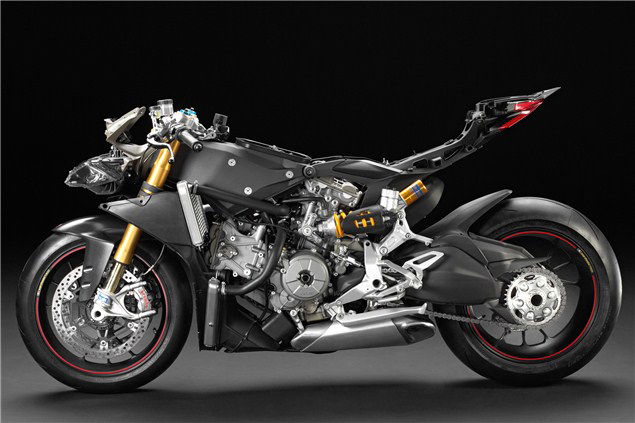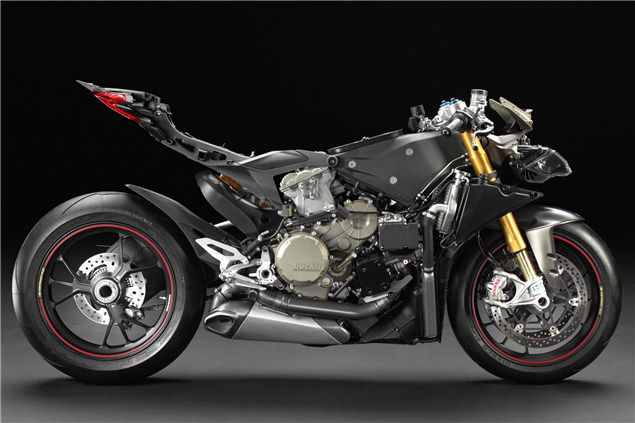Dissecting the Ducati 1199 Panigale
See what's under the fairing of Ducati's new superbike


PICTURES of Ducati's Panigale sans fairing were revealed last week giving us the first chance to see in detail how the firm has managed to pack so much into such a tiny bike.
It's instantly clear, having pored over the shots, that the days of wielding your own spanners around a Ducati have long since passed. The pictures alone are enough to scare off home mechanics, and while Ducati has impressively increased service intervals for the new bike it looks like any serious work is going to involve a lot of stripping down just to gain access to components. Thank God for electronic diagnosis that should help prevent expensive wild goose chases as garages try to chase down faults.
You can't be anything but impressed with the way that Ducati has managed to fit everything into such a small space, not only making the Panigale smaller than its predecessor but moving bulky bits (notably the exhaust) into the centre of the bike, an area that's already filled with engine, chassis, radiators and pretty much everything else. If it wasn't for the need to provide a seat and some lights at the extremities, the Panigale really would be a compacted cube with wheels attached at each end.
The goal has been achieved largely by sculpting any parts that don't have their shapes unalterably defined so they fit in the gaps between the pieces that can't be changed. So while the V-twin engine, despite being new, is much the same shape as its predecessor, components like the exhausts have been squeezed into strange-shaped spaces; even with the bodywork off, there aren't really any places where you can see straight through the Panigale – they're all filled.
It all screams of expense when it comes to development. All those re-shaped components, fitted in places where they're exposed to more heat and vibration than on conventional bikes, will have needed to be designed and tested as well as needing new production methods and machines. It's no surprise that Ducati, currently up for sale, is reckoned to be sitting on some considerable debts.
Strangely, the monocoque chassis itself doesn't look too unconventional or weird; rather than being the focal point of the bike with its fairings removed, it simply appears to be a sensible solution to the main problem of actually squeezing everything in to such a small space.
Heat, or rather, getting rid of it, has clearly been the subject of plenty of thought. Unusually, the lower radiator is entirely ducted; air flowing through it is routed away through an outlet vent in the bottom of the fairing, just ahead of the exhaust. The upper radiators also vent their air straight past the sides of the chassis into the open, leaving surprisingly little flowing around the engine itself. That points towards the new Superquadro motor being particularly well designed when it comes to transferring heat to its coolant rather than to air around it – something that car engines tend to be good at (since they have little or no airflow around them) but bikes often aren't designed to do.
The huge expanses of black plastic around the engine, exhausts and radiators (all those aftermarket carbon-fibre firms must be rubbing their hands at the prospect of removing Panigale owners from their cash) are designed to keep air going just where it's needed and to separate sources of heat from one another, and while talk of naked Panigale-based Streetfighters is inevitably rife, it might prove hard to make an attractive, naked Panigale since those bits are there for a reason.
One thing is certain; while we might have a passing interest in the stripped-down pictures of the Panigale, all Ducati's rivals will have been poring over them for hours (if, that is, they haven't managed to get an 1199 of their own to strip down just yet). It's a new standard for motorcycle packaging efficiency, and an example that rivals will have to follow if they're going to remain competitive.


